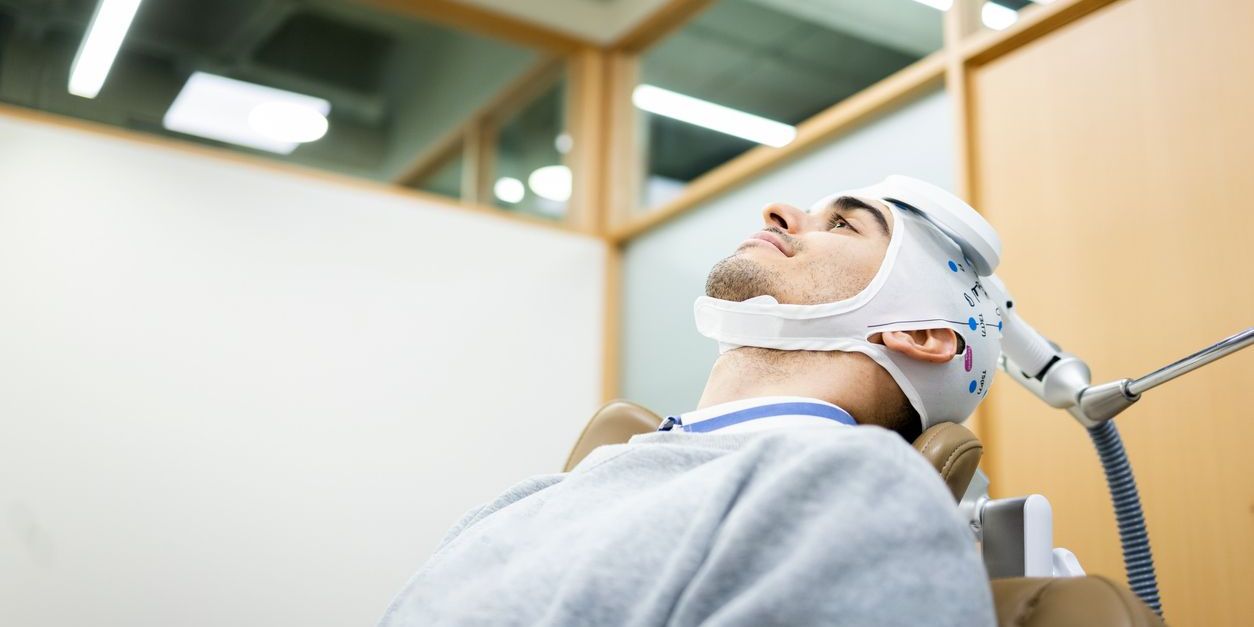Summary: In a head-to-head trial to determine whether TMS is safer than medication for patients with treatment-resistant depression, patients who took medication showed increased risk of adverse events.
Key Points:
- People with treatment-resistant depression often show poor treatment response to standard depression treatment
- Transcranial magnetic stimulation (TMS) is a relatively new and effective treatment for TRD.
- The mood stabilizing medication lithium is an effective adjunct treatment for depression and TRD.
- In this trial:
- TMS and lithium were equally effective in reducing depressive symptoms
- TMS and lithium patients showed similar rates of relapse
- Lithium patients reported a significantly higher number of adverse events
Treatment-Resistant Depression (TRD): The Importance of Effective, Long-Term Maintenance
Mental health experts define treatment-resistant depression as major depressive disorder (MDD) that doesn’t respond well to at least two attempts at treatment with two different types of antidepressant medication.
Studies show the following facts about MDD and TRD:
- 8.9 million adults with MDD receive medication for MDD
- 2.8 million – about 31% – met criteria for TRD
Meeting criteria for TRD means they had a poor treatment response or treatment didn’t meet patient needs, goals, or expectations. Additional research shows the following consequences of untreated TRD:
- Increased time receiving inpatient treatment
- More lost work days
- Increased incidence of co-occurring mental health diagnoses, including anxiety, obsessive-compulsive disorder, and stress-related diagnoses
- Increased substance misuse, sleep problems, instances of self-harm
- Elevated risk of premature mortality
As the research shows, the burden of untreated TRD is high across various life domains, including mental health, employment, and mortality, which creates a sense of urgency around finding effective treatment for TRD. That’s why a new, head-to-head trial comparing TMS and medication is important: it’s the first study to examine the safety of TMS against lithium, which is a common, effective second-line medication for MDD, and an effective adjunct medication for patients with TRD.
TMS vs. Lithium for TRD: Is TMS Safer Than Medication?
In the study “Repetitive Transcranial Magnetic Stimulation as Maintenance Treatment of Depression: The MAINT-R Randomized Clinical Trial” a research team of scientists from Japan, Canada, and the U.S. designed a study to answer the following research question:
How effective is repetitive transcranial magnetic stimulation (rTMS) compared with lithium in preventing relapse of treatment-resistant depression (TRD)?
To test the hypothesis that TMS would be as safe and effective as lithium for treating TRD, the research team recruited 75 patients and split them into two groups. One group – the TMS group – received 24 weeks oof once-weekly TMS, while the second group – the lithium group – received 24 weeks of pharmacotherapy with lithium.
The research team focused their analysis on three outcomes:
- Change in depression scores on the Montgomery-Asberg Depression Scale (MADRS), the Hamilton Rating Scale for Depression (HAMD-17), the Hamilton Rating Scale for Depression (HAMD-21), and the Quick Inventory of Depressive Symptomatology (QIDS-J).
- Relapse to depression, based on depression scale scores
- Safety, measured as incidence of treatment-related adverse events during the 24-week trial period
Let’s take a look at what they found.
Outcomes: TMS Compared to Medication Treatment-Resistant Depression
First, we’ll share the results for the primary area of interest, outcome #1, reduction in depressive symptoms.
TMS vs. Lithium at 4, 8, 12, and 24 Weeks: Depressive Symptoms
- Montgomery-Asberg Depression Scale (MADRS) Scores:
- No significant difference between TMS and Lithium groups
- Hamilton Rating Scale for Depression (HAMD-17) Scores:
- No significant difference between TMS and Lithium groups
- Hamilton Rating Scale for Depression (HAMD-21) Scores:
- No significant difference between TMS and Lithium groups
- Quick Inventory of Depressive Symptomatology (QIDS-J) Scores:
- No significant difference between TMS and Lithium groups
This data confirms the hypothesis that TMS is as effective as lithium in reducing symptoms in patients with treatment resistant depression (TRD). Now let’s look at outcome #2, relapse to depression.
TMS vs. Lithium at 24 Weeks: Relapse to Depression
- Lithium group: 18.9%
- TMS group: 18.4%
This data confirms the hypothesis that TMS is as effective as lithium in preventing relapse to depression. Now let’s look at outcome #3, adverse treatment-related events, which include relapse to depression. These results address the question of whether TMS is safer than medication, specifically lithium, for TRD.
TMS vs. Lithium at 24 Weeks: Treatment-Related Adverse Events
Total adverse events, with discrepancy in totals attributed to individual patients reporting more than one adverse event:
- TMS group: 3
- Lithium group: 16
At 24 weeks, adverse events by group and by type:
- Relapse:
- TMS group: 2
- Lithium group: 3
- Tremors:
- TMS group: 0
- Lithium group: 3
- Headache:
- TMS group: 0
- Lithium group: 3
- Dizziness:
- TMS group: 0
- Lithium group: 2
- Dysesthesia:
- TMS group: 0
- Lithium group: 1
- Insomnia:
- TMS group: 0
- Lithium group: 1
- Decreased libido:
- TMS group: 0
- Lithium group: 1
- Pancreatitis:
- TMS group: 0
- Lithium group: 1
- Hypertension
- TMS group: 0
- Lithium group: 1
Expressed as an odds ratio (OR), the lithium group had a 7.1 OR of an adverse event, or an 87.6% increased likelihood of experiencing an adverse event. Note: dysesthesia is a change in sensation of touch, when touching things becomes uncomfortable and feels hot, cold, like pins and needles, or similar unpleasant sensations.
Overall, the data above show that TMS may be safer than medication for long-term TRD maintenance.
TMS Safer Than Medication: Both Effective Options, With Some Differences
Overall, this study shows that TMS is as effective as lithium for TRD, but has superior overall safety and patient tolerance, which means that it may be a superior treatment strategy for long-term TRD maintenance.
That’s good news for patients with TRD who experience negative side-effects from antidepressant medications and mood stabilizers such as lithium. This research adds further evidence supporting the use of TMS for TRD. In addition to TMS for long term TRD maintenance, treatment options include:
- IV Ketamine:
- Administered as an IV drip in an outpatient setting under the supervision of medical and psychiatric staff
- Effective in reducing symptoms of TRD
- Spravato®:
- Self-administered as a nasal spray in an outpatient setting under the supervision of medical and psychiatric staff
To learn more about these medications, visit our Ketamine and Spravato® treatment page.
Like IV ketamine and Spravato®, patients receive TMS in an outpatient setting under the supervision of medical and psychiatric staff.
To learn more about TMS, visit our Transcranial Magnetic Stimulation treatment page.
In closing, we’ll reiterate the importance of finding safe and effective long-term treatments for TRD. In our article “Long-Term Consequences of Treatment Resistant Depression,” we share information on the consequences of untreated or inadequately treated TRD beyond what we share above. Evidence shows TRD is associated with:
- 200% more use of outpatient resources
- 200% more use of sick leave
- 300% more days in inpatient treatment
When we combine that with data that shows people with TRD have a 20 percent increased risk of premature mortality, then we can further recognize the value of effective long-term maintenance of TRD with treatments like TMS: not only can they improve quality of life, data shows they may reduce TRD-related mortality, which means patients and families may have more time to enjoy their improved overall wellbeing.


 Gianna Melendez
Gianna Melendez Jodie Dahl, CpHT
Jodie Dahl, CpHT